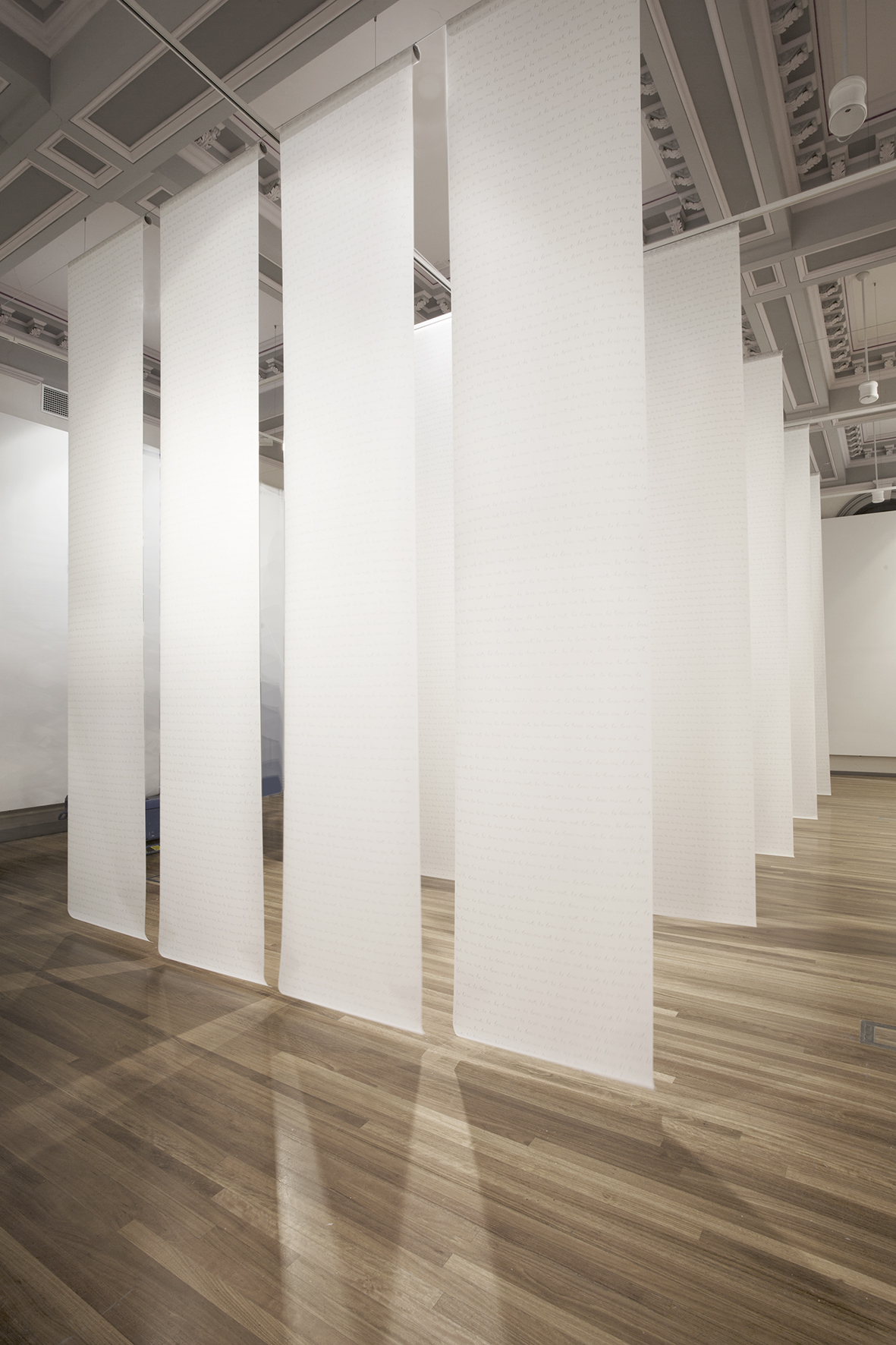‘he loves me, he loves me not’
pencil on drafting film
20 rolls each 84 x 600 cm
‘he loves me, he loves me not’
RMIT Gallery, Melbourne, 2016
he loves me, he loves me not,
AC Institute, New York, 2009
‘he loves me, he loves me not’
chalk on black walls
This phrase ‘he loves me, he loves me not’ is hand written 21,319 times to represent the number of days I have lived and asked this question. It is written on behalf of women across generations and cultures, who are conditioned to seek approval, permission and sanction from the generic ‘he’.
Seeking approval is endemic in most cultures and equated with desirability and status. Women are encouraged to seek validation at an early age, by conforming to prescribed or restrictive behaviours, sanctioned body image, fashion, career and lifestyle choices that require authorization and consent. The phrase ‘he loves me, he loves me not’ can also have negative connotations of subjugation and control where the ‘he’ determines domestic instability and violence.
The relentless, compulsive and lengthy process of repetitively handwriting the phrase and the ephemerality of the suspended drafting film (or chalk on black walls) emphasises the futility of continually seeking validation through asking a question to which no conclusion is possible or necessary.









